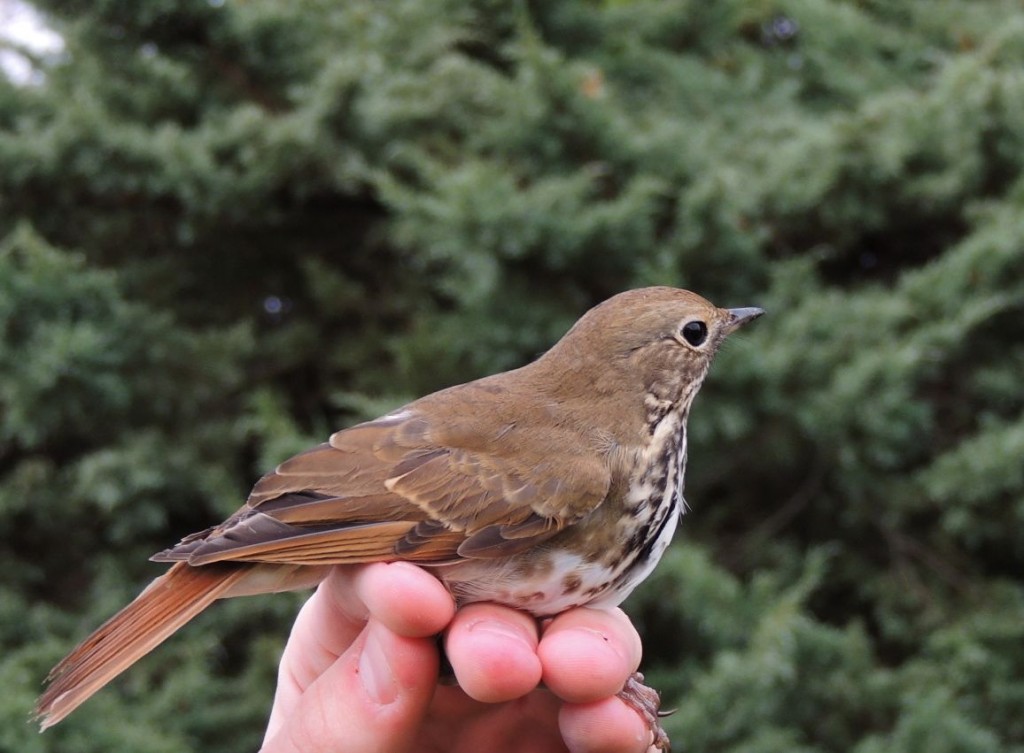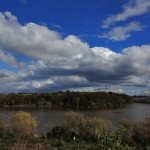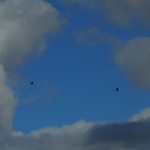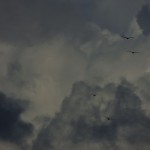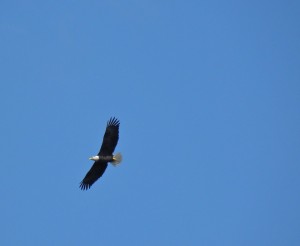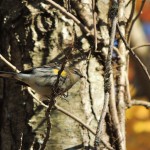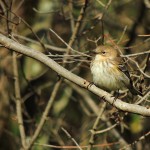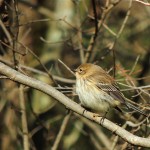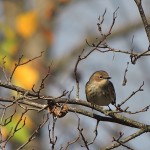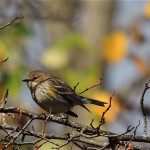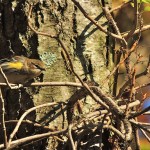25 October 2013. Cayuga ON. Today was almost certainly my last day at the banding lab this year. I have other obligations getting in the way and the lab ceases 2013 operations on November 7th. What a day it was! I arrived as it was getting light and left in the late afternoon; we hardly stopped for a moment there was so much bird activity in the mist nets, in the banding lab and, more than anything, in the air.
Colossal flocks of European Starlings (collective noun, ‘murmuration’); endless streams of Common Grackles (just when we thought there were maybe 2,000, the stream kept on, and on, flowing); and flock after flock of Cedar Waxwings (collective noun, ‘museum’ !!).
The day turned up a couple of new firsts for me: first American Tree Sparrow of the winter and first Fox Sparrow of the fall. Both could be bird of the day almost any day. But then there were the Cedar Waxwings that descended to the mist nets, filling them several times over; we banded 190 of them. It helps not to be too particular about bird poop when you’re handling waxwings, they seem to gorge on purple grapes just before flying into the nets, then expelling most of the juice onto your hands as you band them.
I think I saw the last two Yellow-rumped Warblers. They seemed happy enough even though the vast majority of their migrating fellows left a few days ago.
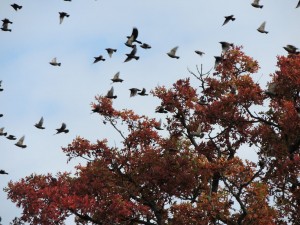
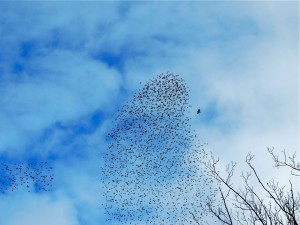
For a while as I did the census I watched a murmuration of starlings socially congregated in the oak and maple treetops and then, seemingly without warning or cue, they took of in a streaming barrel roll, surging across the forest, circling and settling again. Perhaps it was the appearance of a Red-tailed Hawk circling overhead that set them off. For this flock I jotted down a count of 2,000.
Bird of the Day though was the Hermit Thrush. They were passing though in numbers today and as I banded one I commented how it’s one of my favourites. A gentle bird painted in warm browns with a subtly spotted breast, dark brown on white, its rump, tail and primary wing feathers a warm rufous brown, and a pale eye ring that give them a doe-like expression. They’re passively undemonstrative when caught in a mist net; they never give you any trouble. I’ve tried many times to get a picture of one in the field but they always seem to softly step aside and let me pass. I usually only catch a glimpse of the vanishing bird and if I’m lucky enough to find it through my binoculars, as often as not, it’s sitting quietly, looking over its shoulder at me. This photo of one that’s just been banded is the best I’m likely to get for a while.
